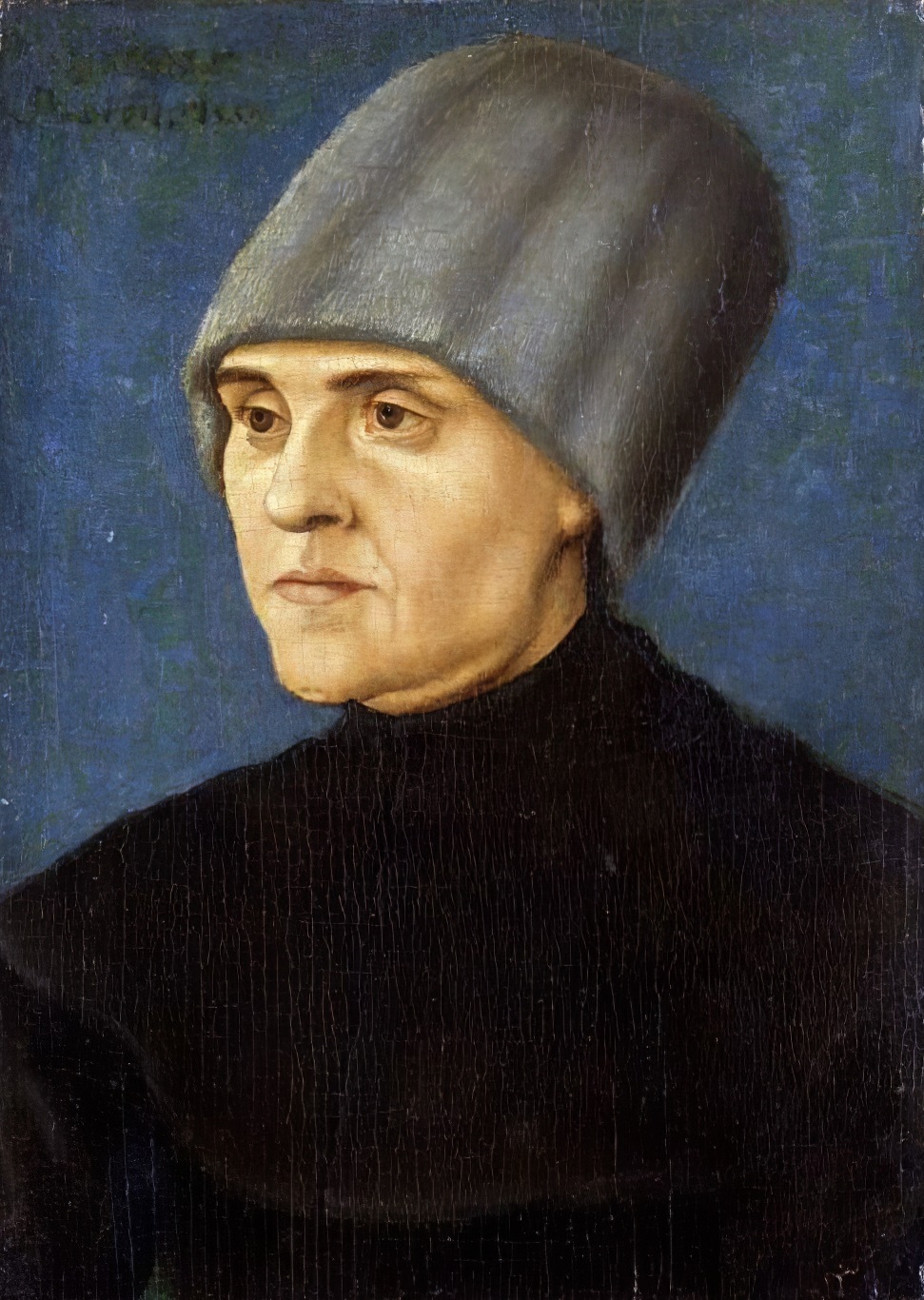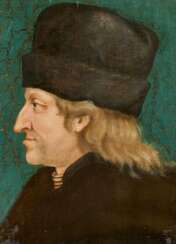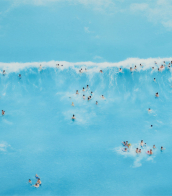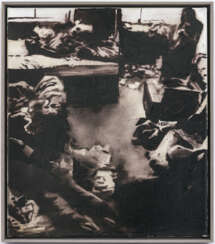майр


Hans Burgkmair the Elder was a German Renaissance painter, graphic artist and sculptor. He came from a family of painters. He studied painting with Martin Schongauer in Colmar from 1488.
Hans Burgkmayr was a versatile artist, working in various techniques including painting, woodcuts, stained glass designs and tapestries. He was known for his complex and detailed style, which included elements of naturalism and symbolism.
Burgkmayr's paintings often depicted religious and mythological themes, as well as historical events. His style is influenced by the Italian Renaissance, particularly in its attention to anatomical accuracy and use of perspective.
One of Hans Burgkmayr's significant contributions was in the field of engraving. His woodcuts were highly regarded for their technical skill and artistic quality.


Heinz Gappmayr was an Austrian artist who created works of visual poetry.


Hans Burgkmair the Elder was a German Renaissance painter, graphic artist and sculptor. He came from a family of painters. He studied painting with Martin Schongauer in Colmar from 1488.
Hans Burgkmayr was a versatile artist, working in various techniques including painting, woodcuts, stained glass designs and tapestries. He was known for his complex and detailed style, which included elements of naturalism and symbolism.
Burgkmayr's paintings often depicted religious and mythological themes, as well as historical events. His style is influenced by the Italian Renaissance, particularly in its attention to anatomical accuracy and use of perspective.
One of Hans Burgkmayr's significant contributions was in the field of engraving. His woodcuts were highly regarded for their technical skill and artistic quality.


Heinz Gappmayr was an Austrian artist who created works of visual poetry.


Max Mayrshofer was a painter and graphic artist from Munich. From 1908 he studied at the Munich Academy and at the private school of Anton Ažbe. He was soon accepted as a graphic artist in the editorial offices of Jugend, Simplicissimus and Hyperion. From 1919 he continuously directed the evening act at the Academy. In 1925 he was appointed professor. Mayrshofer mainly painted still lifes, landscapes and portraits. His drawings of grimacing, violently gesticulating people, made during a visit to an insane asylum, were exhibited in 1908 in the Miethke Gallery in Vienna.


Myron G. Barlow was an American painter and illustrator known for his genre scenes, portraits, and landscapes. He was began his artistic training at the Art Institute of Chicago. Later, he studied at the Académie Julian in Paris, where he was influenced by the Impressionist and Post-Impressionist movements.
Barlow worked as an illustrator for various publications, including Harper's Weekly, Scribner's Magazine, and The Saturday Evening Post. He also taught at the Art Students League in New York City.
Barlow's paintings often depicted everyday life, with a focus on working-class people and their surroundings. His use of color and light gave his paintings a sense of warmth and intimacy.
Barlow was a member of several art organizations, including the National Academy of Design, the Society of American Artists, and the American Watercolor Society. He received numerous awards and honors during his lifetime, including a gold medal at the Panama-Pacific International Exposition in San Francisco in 1915.
Today, his paintings can be found in several museums and institutions, including the National Gallery of Art in Washington, D.C., and the Brooklyn Museum in New York City.


Heinz Gappmayr was an Austrian artist who created works of visual poetry.


Heinz Gappmayr was an Austrian artist who created works of visual poetry.


Hans Burgkmair the Elder was a German Renaissance painter, graphic artist and sculptor. He came from a family of painters. He studied painting with Martin Schongauer in Colmar from 1488.
Hans Burgkmayr was a versatile artist, working in various techniques including painting, woodcuts, stained glass designs and tapestries. He was known for his complex and detailed style, which included elements of naturalism and symbolism.
Burgkmayr's paintings often depicted religious and mythological themes, as well as historical events. His style is influenced by the Italian Renaissance, particularly in its attention to anatomical accuracy and use of perspective.
One of Hans Burgkmayr's significant contributions was in the field of engraving. His woodcuts were highly regarded for their technical skill and artistic quality.


Johann Michael Rottmayr was an Austrian Baroque painter.
Rottmayr worked in Salzburg and Vienna and was considered the first master of fresco paintings in Austria, whose art was influenced by the work of Peter Paul Rubens. Rottmayr's paintings are preserved in the Schönbrunn Palace in Vienna (1710) and in St. Peter's Church in Vienna (Peterskirche, 1713).


Max Mayrshofer was a painter and graphic artist from Munich. From 1908 he studied at the Munich Academy and at the private school of Anton Ažbe. He was soon accepted as a graphic artist in the editorial offices of Jugend, Simplicissimus and Hyperion. From 1919 he continuously directed the evening act at the Academy. In 1925 he was appointed professor. Mayrshofer mainly painted still lifes, landscapes and portraits. His drawings of grimacing, violently gesticulating people, made during a visit to an insane asylum, were exhibited in 1908 in the Miethke Gallery in Vienna.


Sebastian Wegmayr was an Austrian painter of the Biedermeier period.
He studied at the Vienna Academy of Fine Arts, then taught floral painting there. Wegmayr specialized in still lifes, both lush floral, fruit and game.


Florian Süssmayr is a German artist.
In the early 80s Florian was a member of the punk movement Freizeit 81 and until 1984 performed with Lorenz Lorenz, worked as a cameraman and lighting technician. And since 1997 he has been involved in visual arts. Self-portraits often play a central role in his paintings and are closely linked to the artist's biography.
Florian Süssmayr's works, often based on photographs, surprise the viewer with their painterly reproduction of various locations. His own image is recognizable only as a shadow or reflection - in a bathroom mirror or an elevator, on the street. The personality is not important, it is fleeting, and the objects surrounding it are brought to the foreground and drawn in much more detail. Florian Süssmayr has participated in numerous solo exhibitions in New York, Tokyo and Munich.


Galileo Galilei was an Italian naturalist, physicist, mechanic, astronomer, philosopher, and mathematician.
Using his own improved telescopes, Galileo Galilei observed the movements of the Moon, Earth's satellites, and the stars, making several breakthrough discoveries in astronomy. He was the first to see craters on the Moon, discovered sunspots and the rings of Saturn, and traced the phases of Venus. Galileo was a consistent and convinced supporter of the teachings of Copernicus and the heliocentric system of the world, for which he was subjected to the trial of the Inquisition.
Galileo is considered the founder of experimental and theoretical physics. He is also one of the founders of the principle of relativity in classical mechanics. Overall, the scientist had such a significant impact on the science of his time that he cannot be overemphasized.

Georg Galgemair was a German mathematician and astrologer.
He was born into the family of the burgomaster of Donauwörth, was a pupil of Philip Apian, and then a master of mathematics at the University of Tübingen in 1585. After completing his studies, Galgemair began teaching at Lauingen in 1588.
His work on proportional circles led to the development of gnomonics. In the history of science, Galgemair is known for his works on mathematical instruments. As a calendar maker, he succeeded in 1606 in obtaining an imperial privilege for his calendars.

Georg Brentel the Younger was a German draftsman, engraver, and author of works on sundials and instrumentation.
He was the son of the cartographer Hans Brentel (1532-1614) and nephew of the armorial artist Georg Brentel the Elder (1525-1610). He always showed an interest in mathematics and astronomy, writing papers on these subjects and making instruments.
Brentel was particularly fond of designing sundials, and wrote several instructions for assembling various types of sundials - round and cubic, cross-shaped and heart-shaped.





























































